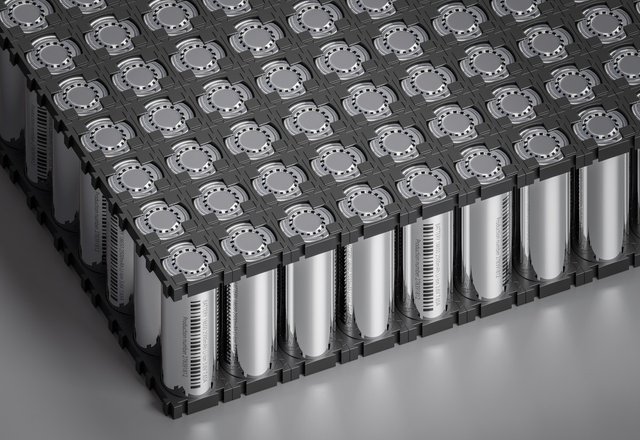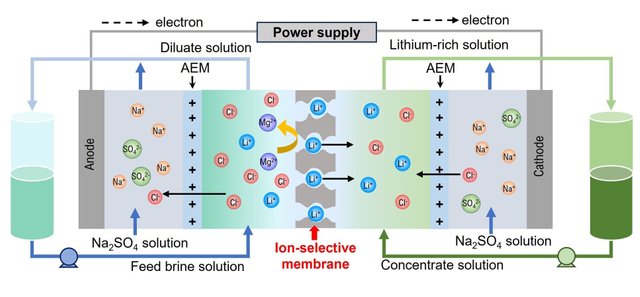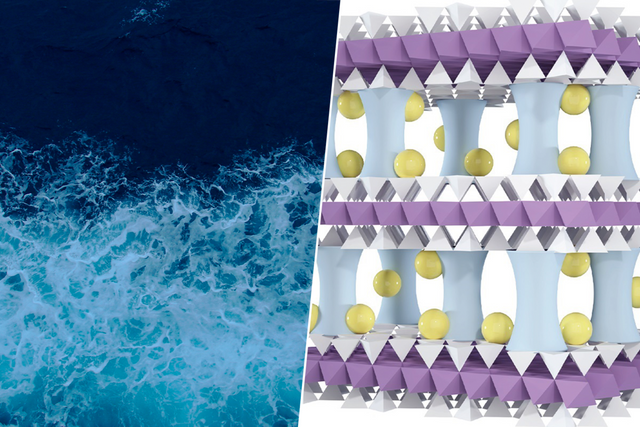A new scientific invention successfully extracts lithium from the oceans/Un nuevo invento científico logra extraer litio de los océanos

Source
By 2025, global lithium consumption has experienced accelerated growth, driven primarily by the rise of electric vehicles (EVs), energy storage systems, and rechargeable batteries. Demand ranges between 1.4 and 1.7 million tons of lithium carbonate equivalent (LCE), with most studies placing the figure around 1.46 million tons. Year-over-year consumption growth in 2024 was close to 30% and remains at a high rate. Demand is outstripping current supply, creating some market tension despite recent production increases.
En 2025, el consumo mundial de litio ha experimentado un crecimiento acelerado impulsado principalmente por el auge de los vehículos eléctricos (EV), sistemas de almacenamiento de energía y baterías recargables. La demanda oscila entre 1,4 y 1,7 millones de toneladas equivalentes de carbonato de litio (LCE), con la mayoría de los estudios situando la cifra alrededor de 1,46 millones de toneladas. El crecimiento interanual del consumo en 2024 fue cercano al 30% y se mantiene con tasas elevadas. La demanda está superando a la oferta actual, lo que genera cierta tensión en el mercado pese a los aumentos de producción recientes.
It is estimated that we currently have approximately 105 million tons of lithium, considering economically exploitable reserves. This would cover global demand for several decades, but the main challenge will be maintaining a sustainable rate of extraction and processing, as well as mitigating the environmental impact of traditional methods and fostering innovative technologies for new sources of lithium. Therefore, finding new sources of this material is more than necessary if we don't want to end up in a bind.
Se estima que, en la actualidad, tenemos aproximadamente 105 millones de toneladas de litio, considerando reservas económicamente explotables. Esto permite cubrir la demanda global por varias décadas, pero el desafío principal será mantener un ritmo de extracción y procesamiento sostenible, así como mitigar el impacto ambiental de los métodos tradicionales y fomentar tecnologías innovadoras para nuevas fuentes de litio. Por eso se hace más que necesario encontrar nuevas fuentes de este material si no queremos acabar a palos.

Source
Along these lines, a group of researchers from Argonne National Laboratory (USA) and the University of Chicago have created membranes made of vermiculite (an abundant clay) and aluminum oxide to extract lithium from aquatic sources, such as seawater and underground brines. These membranes are thinner than a human hair and can filter lithium with atomic precision. By modifying their surface charge, they make the channels selective for lithium ions, allowing them to be efficiently captured while blocking other larger or differently charged ions.
En esta línea, un grupo de nvestigadores del Laboratorio Nacional Argonne (EE.UU.) y la Universidad de Chicago han creado membranas hechas de vermiculita (una arcilla abundante) y óxido de aluminio, para extraer litio de fuentes acuáticas, como agua de mar y salmueras subterráneas. Estas membranas tienen un grosor menor al de un cabello humano y pueden filtrar litio con precisión atómica. Al modificar su carga superficial, logran que los canales sean selectivos para iones de litio, permitiendo capturarlos eficientemente mientras bloquean otros iones más grandes o con diferente carga.
Vermiculite is an abundant and inexpensive clay (around $350/ton) separated into nanometer-thick layers (about 1-2 nanometers thick) that are then re-stacked, creating an extremely thin and dense, functionally two-dimensional membrane. Aluminum oxide pillars are sandwiched between the layers, preventing the structure from collapsing upon contact with water and partially neutralizing the clay's negative surface charges, facilitating handling and stability.
La vermiculita es una arcilla abundante y de bajo costo (alrededor de $350/tonelada) separada en capas nanométricas (unos 1-2 nanómetros de grosor) que luego se re-apilan, creando una membrana extremadamente delgada y densa funcionalmente bidimensional. Se intercalan pilares de óxido de aluminio entre las capas, lo que evita que la estructura colapse al contacto con el agua y neutraliza parcialmente cargas negativas superficiales de la arcilla, facilitando su manipulación y estabilidad.

Source
The most advantageous qualities of this system are, on the one hand, its low cost. Using abundant materials and simple processing techniques, the technology is economically viable for large-scale deployment. It is more efficient than conventional methods, extracting lithium even in dilute solutions and with an abundance of other competing ions. It can also be adapted to extract other critical metals (nickel, cobalt, rare earths) or remove contaminants from drinking water.
Las cualidades más ventajosas de este sistema son, por un lado su bajo coste, al emplear materiales abundantes y técnicas de procesamiento simples, la tecnología es económicamente viable para despliegue a gran escala. Supera en eficiencia a los métodos convencionales, extrayendo litio incluso en soluciones diluidas y con abundancia de otros iones competidores. Además puede adaptarse para extraer otros metales críticos (níquel, cobalto, tierras raras) o remover contaminantes del agua potable.
The project has demonstrated high efficiency in laboratory and pilot tests, with a view to optimization and future industrialization. It has been funded by the U.S. Department of Energy's AMEWS Center, and its results have appeared in high-impact publications. Researchers continue to improve the system's stability and industrial capacity, as well as seek applications in the recovery of other critical minerals. This project represents one of the most promising and sustainable approaches to solving the global lithium challenge, paving the way for its clean extraction from aqueous resources distributed across the globe.
El proyecto ha demostrado alta eficacia en pruebas de laboratorio y piloto, con vistas a la optimización y futura industrialización. Ha sido financiado por el centro AMEWS del Departamento de Energía de EE.UU., y sus resultados aparecen en publicaciones de alto impacto. Los investigadores continúan mejorando la estabilidad y capacidad industrial del sistema, así como buscando aplicaciones en la recuperación de otros minerales críticos. Este proyecto representa una de las aproximaciones más prometedoras y sostenibles para resolver el desafío global del litio, abriendo la puerta a su obtención limpia a partir de recursos acuosos distribuidos en todo el planeta.
More information/Más información
https://interestingengineering.com/energy/lithium-extraction-membrane-seawater-clay